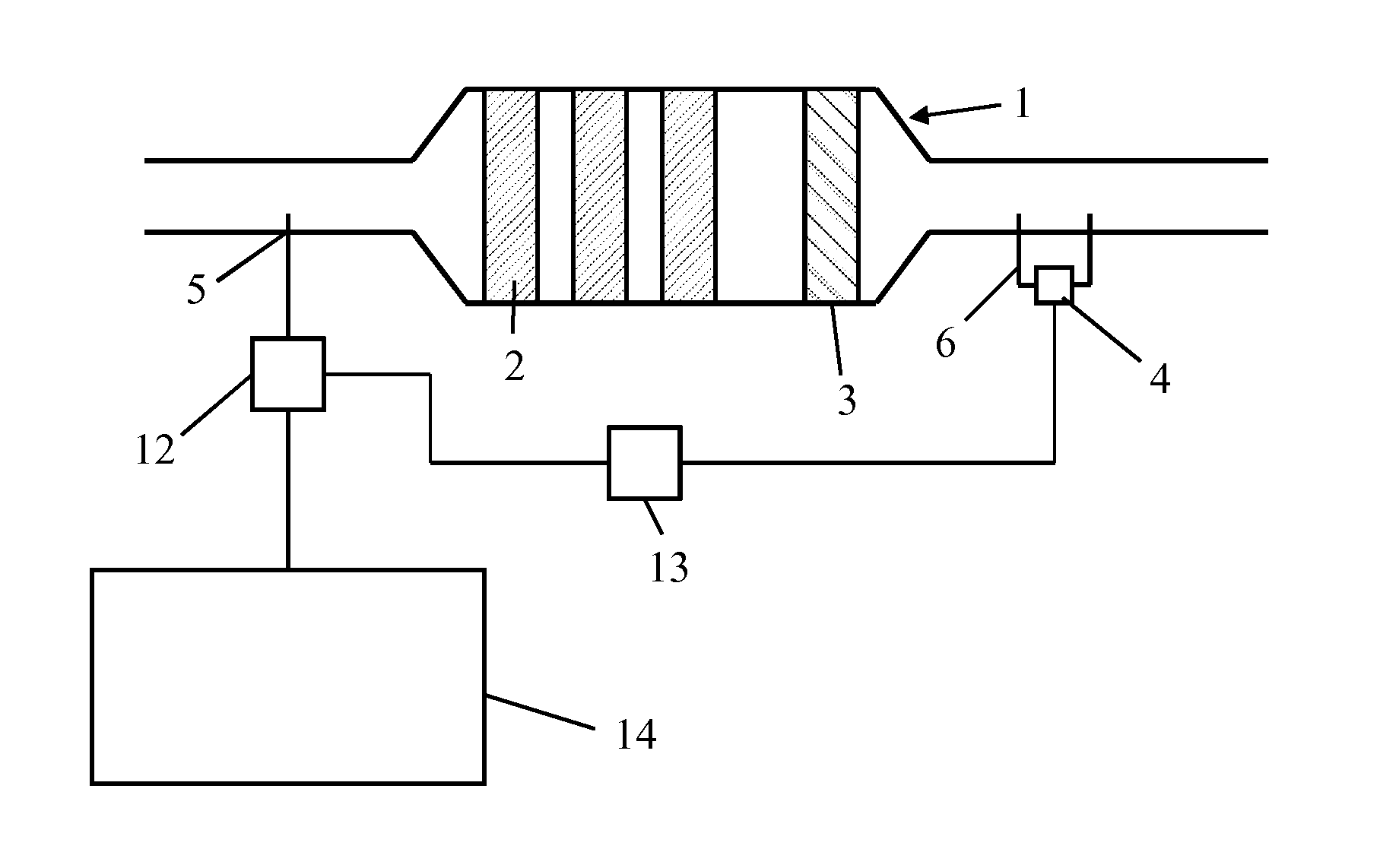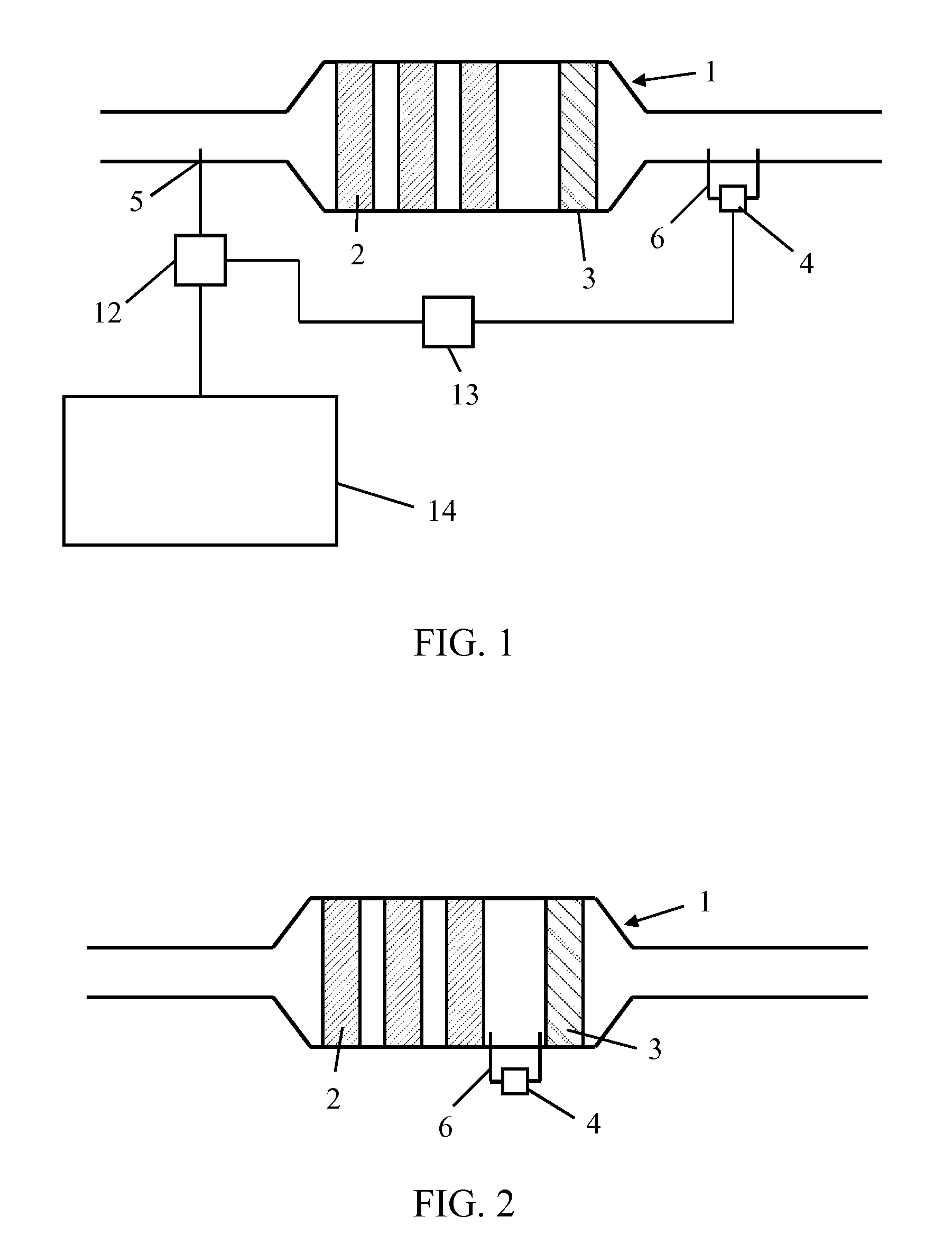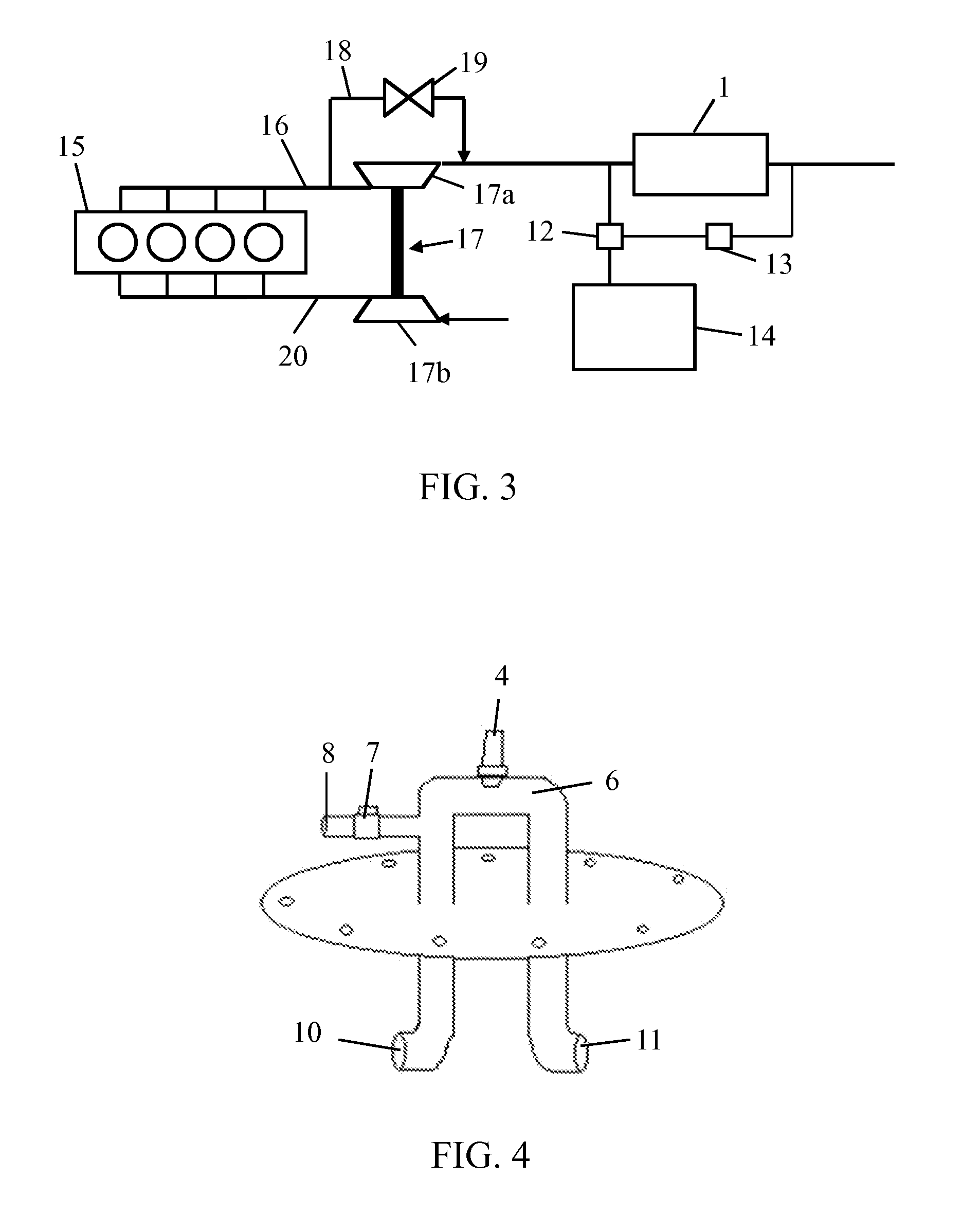Control method and arrangement for selective catalytic reduction
a control method and catalytic reduction technology, applied in process control, separation processes, instruments, etc., can solve the problems of ammonia slippage, serious hazard of ammonia leakage, and ineffective nox reduction, and achieve the effect of simple but effectiv
- Summary
- Abstract
- Description
- Claims
- Application Information
AI Technical Summary
Benefits of technology
Problems solved by technology
Method used
Image
Examples
Embodiment Construction
[0035]The invention is now described in more detail with reference to the accompanying drawings. In FIG. 1 is shown a simplified illustration of an SCR system for an internal combustion engine. The system comprises a catalytic converter 1 having three SCR elements 2. The SCR elements 2 are ceramic honeycomb structures that are coated with a catalyst material. Urea, which is used as the reducing agent, is injected into the exhaust gas flow upstream from the catalytic converter 1 through a reducing agent injector 5. The urea is stored in a tank 14 and dosing unit 12 ensures that the correct amount of urea solution is injected into the exhaust system. A control unit 13 is arranged to control the dosing unit 12. The urea injected into the exhaust system mixes with the exhaust gas and breaks up into ammonia and carbon dioxide due to the heat of the exhaust gas. On the surface of the SCR elements 2, ammonia molecules react with NOx and form nitrogen and water. Inside the catalytic convert...
PUM
| Property | Measurement | Unit |
|---|---|---|
| concentration | aaaaa | aaaaa |
| time | aaaaa | aaaaa |
| structure | aaaaa | aaaaa |
Abstract
Description
Claims
Application Information
 Login to View More
Login to View More - R&D
- Intellectual Property
- Life Sciences
- Materials
- Tech Scout
- Unparalleled Data Quality
- Higher Quality Content
- 60% Fewer Hallucinations
Browse by: Latest US Patents, China's latest patents, Technical Efficacy Thesaurus, Application Domain, Technology Topic, Popular Technical Reports.
© 2025 PatSnap. All rights reserved.Legal|Privacy policy|Modern Slavery Act Transparency Statement|Sitemap|About US| Contact US: help@patsnap.com



